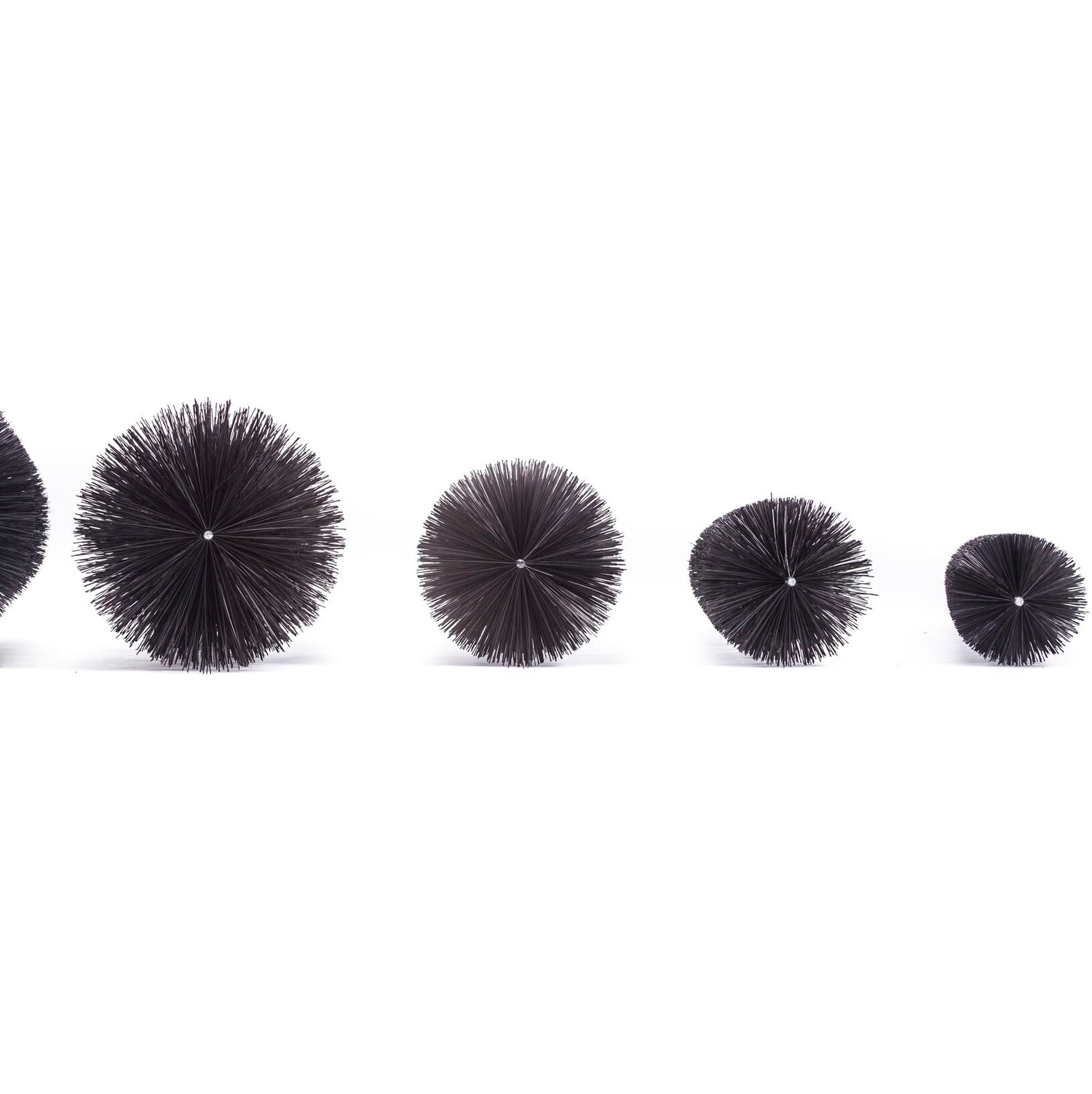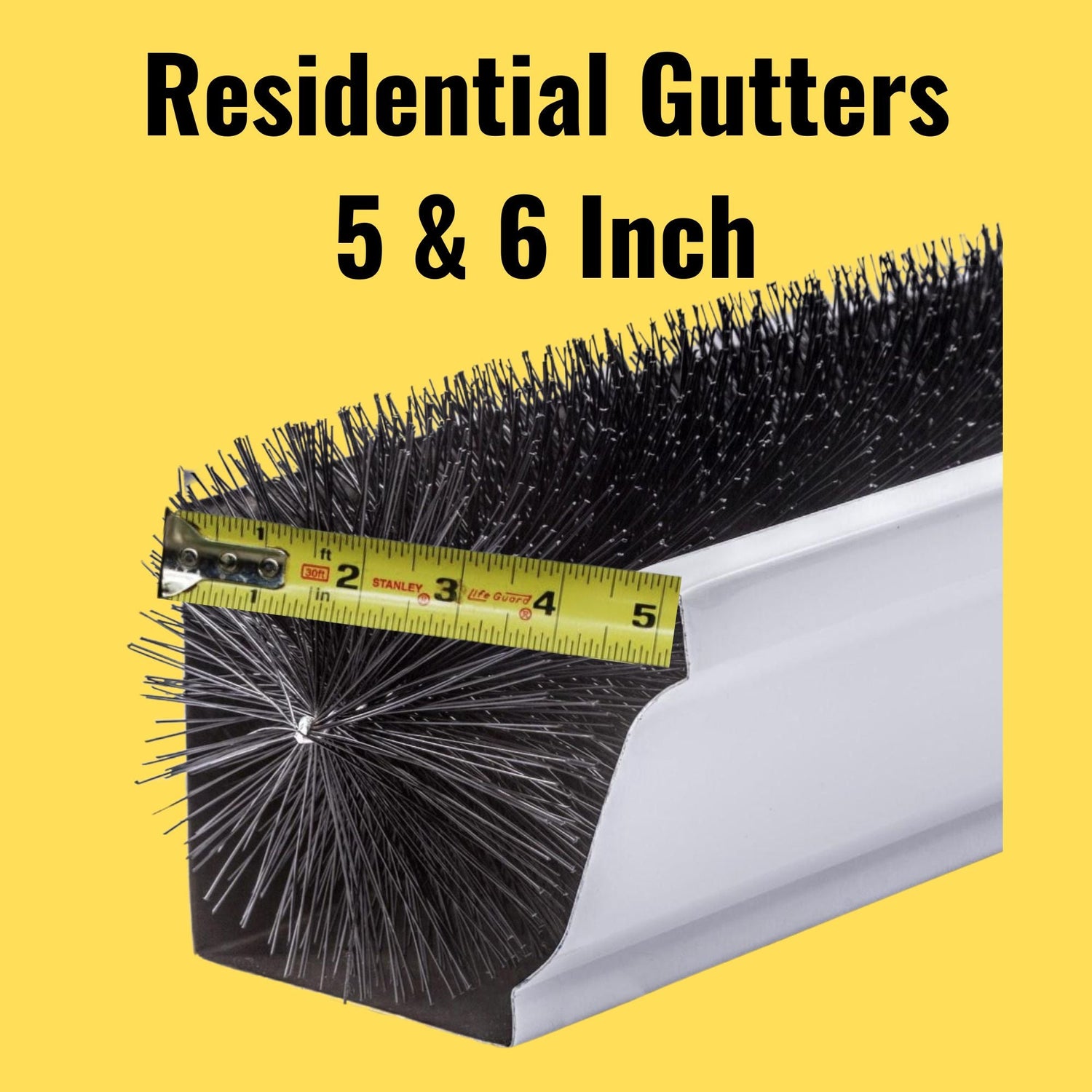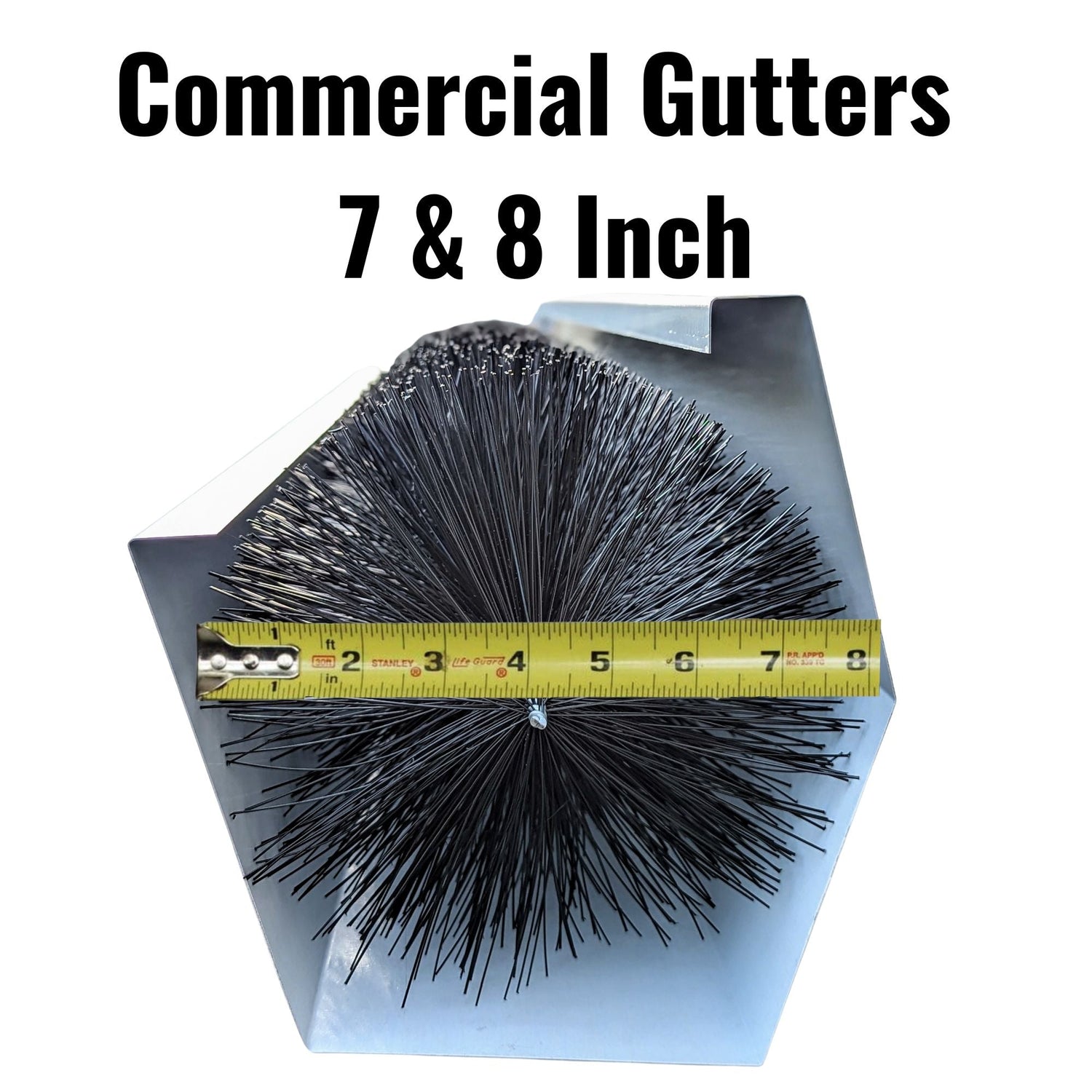Maintaining your home’s gutters prevents water damage and expensive repairs. Without regular cleaning, gutters can become clogged with leaves and debris, leading to mold, wood rot, and damaged foundations. You can keep your gutters clear and functioning correctly with the right tools. Whether you're a DIY homeowner or considering professional help, using practical gutter cleaning tools ensures your home stays protected from water-related problems.
Why Clean Your Gutters?

Regularly cleaning your gutters is essential for maintaining the health and longevity of your home. Gutters are designed to direct rainwater away from your roof, walls, and foundation. However, when clogged with leaves, dirt, and debris, they can’t perform their job effectively. This can lead to overflowing gutters, which can cause water damage to your siding, foundation cracks, basement flooding, and roof leaks. Blocked gutters can also become breeding grounds for pests like mosquitoes and rodents.
Cleaning your gutters ensures unobstructed water flow, preventing costly repairs and protecting the integrity of your home. Regular maintenance, especially during the fall and spring, keeps your gutter system working efficiently year-round and saves you from dealing with larger issues down the road.
Why Using the Right Gutter Cleaning Tools Matters
Using the right tools for gutter cleaning ensures the job is done safely, efficiently, and effectively. Cleaning gutters involves more than just removing leaves and debris—it’s about ensuring that water can flow freely to prevent blockages, leaks, and overflow. Proper tools, like a sturdy ladder, gutter scoop, garden hose, and gloves, make it easier to access and clean gutters thoroughly while minimizing the risk of injury. Specialized tools, such as telescoping wands or gutter vacuums, allow you to reach difficult areas without needing to climb a ladder, enhancing safety.
Having the right equipment also reduces the time and effort required, ensuring that your gutters stay clear and functional year-round. In contrast, improper tools can damage gutters, leave behind debris, or increase the risk of accidents, making routine maintenance more difficult and less effective.
Essential Gutter Cleaning Tools Every Homeowner Should Consider
Having the right tools makes gutter cleaning easier, safer, and more efficient. Below is a breakdown of essential tools that help homeowners maintain their gutters effectively, whether cleaning by hand or using equipment designed for hard-to-reach areas.
Gutter Scoops for Quick Debris Removal
Gutter scoops are specialized tools shaped to fit the width and curvature of most gutters, making it easy to remove large debris like leaves, twigs, and dirt. They allow homeowners to dig out compacted debris and mud that can’t be removed by blowing or flushing. Gutter scoops work particularly well for hands-on cleaning, and when paired with protective gloves, they help keep your hands clean and shielded from sharp objects, such as nails or gutter fasteners.
- Best for: Removing heavy buildup and wet debris by hand.
- Tip: Use a bucket or tarp to collect debris as you scoop it out to avoid making a mess on the ground.
Telescoping Poles: Cleaning High Gutters Safely
Telescoping poles are ideal for reaching gutters on second-story homes or hard-to-reach areas without the need for a ladder. These poles come with various attachments, such as brushes, scrapers, or high-pressure nozzles, that allow you to clean gutters while standing on the ground. Telescoping poles are particularly helpful for homeowners with uneven surfaces around the house, where placing a ladder could be risky. Additionally, they provide a safer option for individuals who prefer to avoid working at heights.
- Best for: Cleaning second-story gutters or areas where using a ladder is unsafe.
- Tip: Look for poles with lightweight, adjustable extensions to make the cleaning process more comfortable and manageable.
Leaf Blower Attachments: Speeding Up the Process
Leaf blower attachments are an efficient way to clear out dry leaves and lightweight debris quickly. These attachments connect to a standard leaf blower, extending the tool’s reach to blast out leaves from the gutters. They are particularly effective during fall, when gutters accumulate a lot of foliage. However, this method works best in dry conditions, as wet debris may stick to the gutter and require additional cleaning tools like scoops or a garden hose to remove.
- Best for: Fast removal of dry leaves and light debris, especially during fall.
- Tip: Wear protective eyewear and gloves to shield yourself from flying debris while blowing out the gutters.
Additional Gutter Cleaning Tools to Consider
- Ladder Stabilizers: Provide extra support and prevent the ladder from damaging the gutters. Essential for homeowners using ladders on uneven ground.
- Gutter Vacuums: A powerful option for clearing out both wet and dry debris from the ground. These vacuums work well for homes with high gutters or multiple stories.
- Garden Hose with Sprayer Attachment: Helps flush out the remaining debris and ensures water flows smoothly through the gutters and downspouts.

Using the right tools makes gutter cleaning safer and more effective, whether you’re tackling it yourself or hiring help. Gutter scoops are great for heavy buildup, telescoping poles ensure safe cleaning from the ground, and blower attachments offer quick solutions for dry leaves. For complete gutter maintenance, consider combining these tools based on the season and type of debris you encounter. With the proper tools in hand, you’ll keep your gutters functioning smoothly and reduce the frequency of major cleanouts.
Roof Gutter Cleaning Tools for Hard-to-Reach Areas
Maintaining gutters on multi-story homes or hard-to-reach areas can be challenging, but the right tools make it easier and safer. Below are essential tools and best practices for tackling high gutters efficiently.
When to Use Extension Poles for Second-Story Gutters
Extension poles are indispensable for homes with two or more stories, allowing homeowners to clean gutters safely from the ground. These poles can be fitted with various attachments, such as brushes, scoops, or high-pressure nozzles, to help remove leaves, dirt, and other debris.
- Key Features to Look For: Choose poles with adjustable lengths to reach different gutter heights and ergonomic grips for better control during cleaning. Some extension poles also offer angled attachments to ensure thorough cleaning, even in tight corners.
- Safety Tip: When using an extension pole, always stand on a flat, stable surface and ensure you maintain a secure grip to avoid losing control.
Extension poles are especially valuable for those who want to avoid the risks of climbing ladders, particularly on uneven or slippery surfaces.
Best Practices for Cleaning Roof Gutters Safely
Safety is paramount when cleaning gutters, especially on roofs with steep pitches or second-story gutters. Below are some essential safety tips for working near high gutters:
- Use Ladder Stabilizers: These attachments secure your ladder and prevent it from shifting or leaning against the gutters, minimizing the risk of damage or falls.
- Wear Non-Slip Shoes: Shoes with a strong grip provide better traction, reducing the chance of slipping on a wet or sloped roof.
- Minimize Roof Contact: If your roof is steep, opt for tools like extension poles or telescoping wands to minimize direct contact with the roof and stay safely on the ground.
- Choose Calm, Dry Days for Cleaning: Avoid working on windy or rainy days to reduce the risk of accidents. A dry, calm day ensures better footing and greater control over cleaning tools.
By following these safety practices, you’ll reduce the risk of accidents and make the cleaning process more manageable.
Gutter Vacuum Kits for Minimal Cleanup Effort

Gutter vacuum kits are a convenient, mess-free solution for cleaning gutters, especially in areas prone to frequent debris buildup. These kits connect to wet/dry vacuums and are equipped with long tubes that allow you to suck up leaves, pine needles, and compacted debris directly from the gutters.
- When to Use: Gutter vacuums are ideal for wet, compacted material that can be challenging to remove with a blower or scoop. They’re particularly effective after rain, when leaves and dirt tend to stick to the gutter.
- Advantages: Using a vacuum ensures minimal mess since debris is collected directly into the vacuum canister, reducing the need for additional cleanup on the ground.
- Pro Tip: Look for vacuum kits with angled nozzles to easily reach corners and hard-to-access areas within the gutter. Some kits also come with clear tubes, allowing you to monitor debris collection in real time.
For homes with high gutters or complex roof structures, extension poles, vacuum kits, and safe work practices make cleaning easier and safer. Extension poles provide a practical solution for second-story gutters, allowing you to clean from the ground. Gutter vacuums reduce mess by collecting debris directly, making post-cleaning work minimal. By following safety guidelines, using the right tools, and working in favorable weather conditions, you’ll keep your gutters functioning effectively while minimizing risks.
How to Use Gutter Downspout Cleaning Tools Efficiently
Downspouts play a critical role in your gutter system, directing water away from your home’s foundation. However, blockages within downspouts can disrupt water flow, leading to gutter overflow and potential water damage. Using the right downspout cleaning tools ensures that blockages are cleared efficiently, keeping your gutters functioning properly. Below are some key tools and techniques to maintain your downspouts.
Gutter Downspout Cleaning Tools
Flexible Rods for Clearing Blockages
Flexible rods are ideal for dislodging tough debris within downspouts. These rods come with brush or auger attachments and can be fed through the downspout to push out leaves, twigs, and dirt. They work particularly well on stubborn blockages that can’t be removed with water alone.
- How to Use: Insert the rod from the bottom of the downspout and twist as you push it upward to dislodge any compacted material. Slowly pull the rod out, removing any attached debris.
- Tip: Flexible rods with brush tips are especially effective for downspouts clogged with wet leaves or mud.
Water Jets for Quick Flushing
Water jet attachments connect to a garden hose and direct high-pressure water into the downspout to flush out loose material. They are perfect for preventing small blockages from forming by regularly washing debris out of the system.
- How to Use: Attach the jet nozzle to your garden hose and insert it at the top of the downspout. Run water at high pressure, moving the jet back and forth to ensure all debris is cleared.
- Tip: U-shaped water jet attachments allow for easy access to hard-to-reach downspouts at ground level.
Gutter Vacuum Kits for Downspouts
Gutter vacuum kits are not just useful for gutters—they also excel at clearing debris from downspouts. Wet/dry vacuums with specialized attachments can suck out compacted leaves and dirt from downspouts, minimizing mess.
- How to Use: Connect the vacuum hose to the downspout and run the vacuum on high power to extract blockages. For tougher clogs, alternate between vacuuming and flushing with water.
- Tip: Some kits include clear tubing, making it easy to see when the blockage has been cleared.
Plumber’s Snake for Severe Blockages

A plumber’s snake—typically used for drains—works well for severe downspout clogs. It’s particularly effective if tree roots or other dense debris are causing the blockage.
- How to Use: Insert the snake from the bottom of the downspout and feed it upward until you encounter resistance. Rotate the handle to break up the blockage, then flush with water to ensure the downspout is clear.
- Tip: Plumber’s snakes with flexible extensions can navigate bends in the downspout more easily.
Keeping downspouts clear is essential for maintaining an effective gutter system and preventing overflow. Flexible rods, water jets, vacuum kits, and plumber’s snakes offer practical solutions for tackling different types of clogs. Regularly flushing downspouts with water and inspecting them after storms ensures smooth water flow and reduces the risk of future blockages. By using the right tools efficiently, homeowners can keep their downspouts functional and protect their property from water damage.
Safety Tips When Cleaning Gutters with Tools
- Use Ladder Stabilizers: Ensure your ladder stays secure and doesn’t tip over.
- Wear Protective Gear: Gloves, safety glasses, and non-slip shoes help prevent injuries.
- Avoid Overreaching: Move your ladder frequently to maintain a safe working position.
- Work with a Partner: Having someone hold the ladder adds an extra layer of safety.
- Choose the Right Day: Clean gutters on dry, windless days to minimize risks.
DIY or Hire a Professional? Understanding When to Use Gutter Cleaning Tools
While DIY cleaning is cost-effective for most homeowners, certain situations may require professional help. Hiring a professional ensures the job is done safely and effectively if your gutters are severely clogged or located in hard-to-reach areas. DIY tools are great for routine maintenance, but professionals have the equipment and expertise needed for more complex jobs.
Choosing the Best Tool for Cleaning Dirty Gutters
When to Use Brushes, Scoops, or Leaf Blowers
Brushes are ideal for scrubbing grime and algae, while scoops work well for larger debris. Leaf blowers are excellent for quick cleanups, especially during the fall. Choose tools based on the type and amount of debris in your gutters for the most efficient cleaning experience.
Selecting the Right Tools Based on Gutter Material
Different materials like aluminum or vinyl may require specific cleaning tools to avoid damage. Plastic scoops and soft-bristle brushes are gentle enough for delicate gutters, while more durable tools can handle more rigid materials. Consider the condition of your gutters when selecting your cleaning equipment.
Specialized Tools for Stubborn or Wet Debris
Specialized tools like water blasters or stiff brushes are the best for wet or compacted debris. These tools can break up material without damaging your gutters. In some cases, vacuum kits and brushes may be required to clear the gutters fully.
Keeping your gutters clean with the right tools ensures water flows freely and reduces the risk of damage to your home. Whether you're using a scoop, a telescoping pole, or a vacuum kit, having the proper tools makes gutter maintenance easier and safer. For those looking to minimize the need for frequent cleaning, GutterBrush offers a practical solution that prevents clogs while maintaining water flow. With regular care and the right equipment, you can protect your home from water damage and enjoy peace of mind year-round.
Key Takeaways
- Neglected gutters can lead to significant damage, including mold, rot, and cracked foundations, emphasizing the need for regular maintenance.
- Gutter scoops, telescoping poles, and leaf blower attachments are essential tools for quick and effective cleaning.
- Telescoping poles and vacuum kits make it easier and safer to clean high or hard-to-reach gutters.
- Downspout cleaning tools are vital for preventing blockages and ensuring water flows freely through the entire gutter system.
- While DIY cleaning tools offer a cost-effective solution, professional help may be necessary for severe clogs or challenging locations.
About GutterBrush
At GutterBrush, we offer innovative gutter protection systems for both Residential and Commercial properties. Our unique brush technology, recognized by Home & Garden TV, The Family Handyman, At Home with Gary Sullivan, and Home Depot, ensures your gutters remain clog free while filtering rainwater, reducing the need to frequently buy gutter guards.
A family-owned company serving American homesteads since 2004, we're proud to have over 1200 5-star reviews, supported by a 10-year material warranty and a 365-day refund policy.




